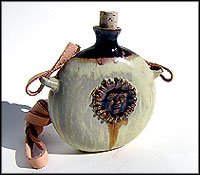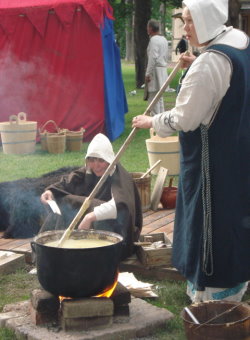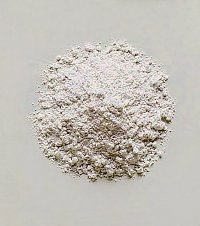Hygiene & Cosmetics
Explain how Europe benefited from cultural diffusion during the period c. A.D. 1000 - 1500.

From the 9th century, there was great trade between Byzantium and Venice bringing perfumes into Europe. There was much trade within Arabia, bringing perfumes from Baghdad to Muslim Spain.
Musk and floral perfumes were brought to northwest Europe in the 11th and 12th centuries from Arabia, through trade with the Islamic world and with the returning Crusaders. Those who traded for these were most often also involved in trade for spices and dyestuffs. There are records of the Pepperers Guild of London which go back to 1179; their activities include trade in spices, perfume ingredients and dyes.
Use of alcohol in perfumery was known in northwest Europe in the 12th century but was not widespread until later. A variant of distilled alcohol, rather than alcohol mixed with water, was known in France in the 13th century, prepared by using quicklime in the mix to remove much of the water. Alcohol-based perfume was well known in parts of mainland Europe and came into use in England in the 14th century.

Medieval Soap

Medieval Soap - Making
Arabs living in the desert and later, the Turks, were perhaps the first societies to recognise the value of soap. After the Turks invaded the Byzantine Empire, soap became a more widespread commodity. The crusaders found that cosmetics were widely used in the Middle East and spread their use even further. However, isolated tribes of Vikings and Celts discovered soap independently and in fact the Celts are credited with introducing soap to England c. A.D. 1000.
It is not until the 13th century, that soap making became more popular and developed into a viable and profitable industry. Marseilles in France emerged as the first great center of soap making and remained an important producer throughout the Middle Ages, later being rivaled by Italy and Spain.
Hard soaps were luxury articles, made of olive oil, soda, and a little lime, often with aromatic herbs. They were manufactured in the olive-growing south, especially Spain; hence the modern Castile soap. The main reason for this being the plentiful supply of olive oil and barilla (a fleshy plant whose ashes were used to make lye) in these areas. This formulation became the standard used throughout the regions and remained so right up until the 19th century.
During the Early Middle Ages, the dominance of the church kept the use of cosmetics to a minimum. Cosmetics as a speciality in and of itself began separating from medicine during the period 1200 - 1500. Following this, there appears to have been a separation again into two branches of cosmetics: those used for routine beautification of the skin, and those used for the correction of cosmetic disorders of the skin, hair, nails and teeth.
Noble ladies, who wished to achieve the fashionable pale complexion, applied white powder and water-soluble paint. Some even used leeches to drain the blood from their cheeks, which no doubt served a dual function as even the least attractive of the male species could be guaranteed a swoon at some point in the evening. Lipstick and rouge were reserved for women of bad character. However, some rich 13th century Italian women wore pink lipstick to show that they could afford synthetic make-up.
In the 15th to 17th centuries, cosmetic literature was limited to the books of secrets
devoted not only to bodily embellishment but also to medicine.
The first Pharmacopoeia of London
, published in 1618, showed that the pharmacists had all the necessary equipment and skill to make and sell cosmetic
products. However, the increasingly stringent regulations governing their work kept most of them exclusively occupied with the compounding of medications.

White Lead Powder
During the Italian Renaissance, women wore lead paint on their faces often causing serious health consequences. Tooth decay, adverse skin conditions and poisoning were often caused by dangerous makeup.
Other, more dangerous concoctions included the by now obligatory white lead for the face, but also rouge made from mercuric sulphide, mercury sublimate for removing blemishes and a hair dye of lead, sulphur, quicklime and water designed to match the queen's natural red. Preparations such as these undoubtedly set the wheels in motion for the development of less fatal cosmetic products.
